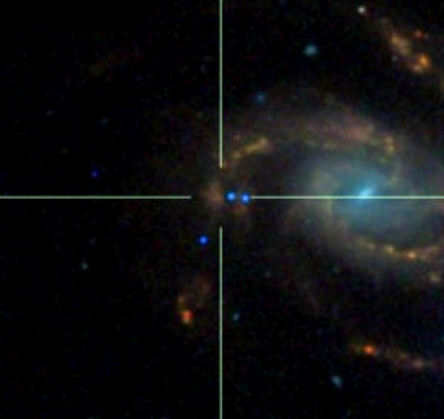Sea reveals star gas
 Scientists have found evidence of ancient star explosions in deep-sea sediments.
Scientists have found evidence of ancient star explosions in deep-sea sediments.
A mystery surrounding the space around our solar system is unfolding thanks to supernova-signatures found in deep-sea sediments.
Professor Anton Wallner, a nuclear physicist at ANU, has discovered that the Earth has been travelling for the last 33,000 years through a cloud of faintly radioactive dust.
“These clouds could be remnants of previous supernova explosions, a powerful and super bright explosion of a star,” Professor Wallner says.
Researchers led by Professor Wallner have searched through several deep-sea sediments from two different locations that date back 33,000 years using the extreme sensitivity of the ANU Heavy Ion Accelerator Facility (HIAF) mass spectrometer.
They found clear traces of the isotope iron-60, which is formed when stars die in supernova explosions.
Iron-60 is radioactive and completely decays away within 15 million years, which means any iron-60 found on the earth must have been formed much later than the rest of the 4.6-billion-year old earth and arrived here from nearby supernovae before settling on the ocean floor.
For the last few thousand years the solar system has been moving through a denser cloud of gas and dust, known as the local interstellar cloud, (LIC), whose origins are unclear.
If this cloud had originated during the past few million years from a supernova, it would contain iron-60, and so the team decided to search more recent sediment to find out.
Sure enough, there was iron-60 in the sediment at extremely low levels - equating to radioactivity levels in space far below the Earth’s natural background levels - and the distribution of the iron-60 matched earth’s recent travel through the local interstellar cloud.
However, the iron-60 extended further back and was spread throughout the entire 33,000 year measurement period.
The lack of correlation with the solar system’s time in the current local interstellar cloud seems to pose more questions than it answers.
It is unclear whether the cloud was formed by a supernova, or where it actually came from. Secondly, researchers want to know why iron-60 appears to be so evenly spread throughout space.
“There are recent papers that suggest iron-60 trapped in dust particles might bounce around in the interstellar medium,” Professor Wallner said.
“So the iron-60 could originate from even older supernovae explosions, and what we measure is some kind of echo.
“More data is required to resolve these details.”







 Print
Print